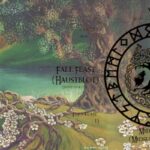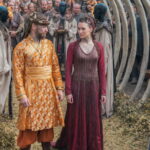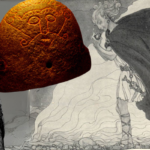Norse mythology is full of fantastic objects that had special powers or symbolism.
The vast majority of these were associated with men, and in particular the male gods of Asgard, and reveal much about the characters and powers of these deities.
In contrast, very few are associated with the female goddesses of Norse mythology, about whom we also know significantly less. One notable exception is Brísingamen, the shining necklace of the goddess Freya. But what made Brísingamen special, and what does it reveal about its owner?
What is Brísingamen
Brísingamen was a brilliant golden necklace possessed by the goddess Freya. Like all the treasures of Norse mythology, Brísingamen was created by the dwarves, the master craftsmen of the Norse cosmos.

The name Brísingamen can be interpreted in two ways. The second part, “amen” means necklace of torc. The first part, “brísingr” could be a poetic term for fire or amber, suggesting that Brísingamen meant necklace gleamed like the sun.
However, “brísingr” can also refer to an otherwise unattested group of people, the Brísinga, and therefore Brísingamen “necklace of the BrIsinga”. Some people have suggested that the dwarves that made the necklace were therefore from the Brísinga tribe.
It is also possible that both interpretations are correct, and that Brísingamen was named for the dwarves, who were in turn named for their skill in working fine metals, such as gold.

Brísingamen belonged to Freya, the goddess of love, sexuality and magic in the Norse pantheon. Brísingamen seems to have been something that the goddess is rarely seen without.
When Thor poses as Freya in order to trick a giant, he must wear Brísingamen, suggesting that it was a defining characteristic of the goddess.

The story about Loki stealing Brísingamen from Freya, and the necklace’s subsequent retrieval by Heimdall, also suggests that Brísingamen was precious to the goddess, otherwise it would have held no interest to the trickster.
Origins of Brísingamen
The story of the origin of Brísingamen is told as part of the Saga of Olaf Tryggavason, which was compiled by two Christian priests in the late 14th century, and overtly promotes Christian interests.

In the story Freya is portrayed as the concubine of Odin, who is the king of Asialand. Freya is inexplicably drawn to the forge of four dwarves, named Dvalinn, Alfrik, Berling and Grer, where she sees them making the finest necklace she has ever seen.
Immediately filled with desire for the object, she offers the dwarves silver and gold in order to possess it. However, the dwarves refuse, and say that they will give her Brísingamen only if she spends a night with each of them. Freya agrees.

What could have been a straightforward transaction becomes complicated by the machinations of Loki. The trickster saw Freya heading to the dwarves, followed her, and witnessed everything that happened. He rushed back to Odin ahead of Freya in order to inform him of her behaviour. Angered by her promiscuity, Odin orders Loki to steal Brísingamen.
In order to do this, Loki turns himself into a fly to sneak into Freya’s room and take Brísingamen. He finds that she is sleeping on her back, preventing him from accessing the clasp, so he bites her, causing her to role in her sleep. This part of the story seems to be a clear reference to the story of when Loki turned himself into a fly in order to sabotage the work of two dwarven craftsmen in order to win a bet.
When Freya awakes in the morning and sees that Brísingamen is gone, she correctly divines that Loki took the necklace, at the behest of Odin. She confronts Odin over the theft, and he says that he will only return Brísingamen to her if she curses two kings to fight for eternity, or until they are slain by christened men. She does this, and two kings fight for over one hundred years until the Christin lord Olaf Tryggvason arrives and slays them.
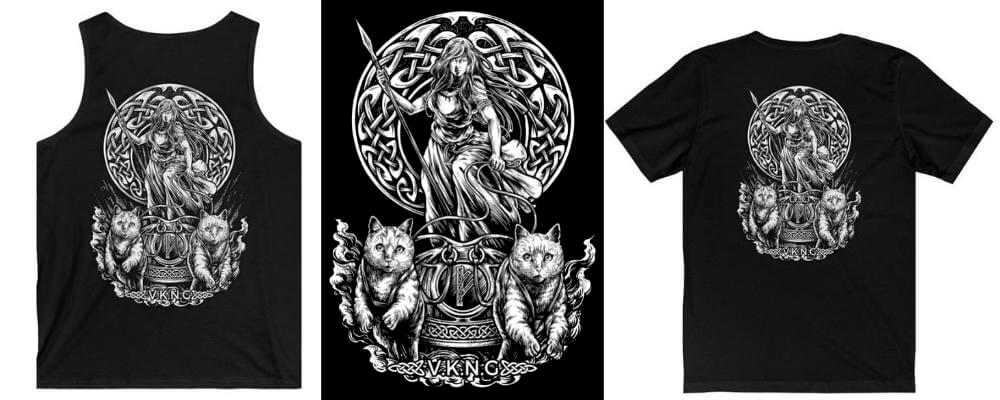
Interpreting Brísingamen
This story of the acquisition of Brísingamen is often used as evidence of the promiscuous character of the goddess of sexuality. While Freya may have been seen by her worshippers as a woman who enjoyed the act of making love, this is a rare example of her behavior being vehemently condemned.

This suggests that the Christian authors were deliberately besmirching the name of the goddess as part of their condemnation of the old religion.
The suggestion that Freya passed a night with each of the dwarves in payment for Briísingamen is also open to interpretation. Brísingamen is never specifically referred to as possessing magical powers, but most of the objects created by the dwarves did.

Therefore, it is highly likely that the necklace also possessed some special power. Perhaps Brísingamen added to the irresistible beauty of the goddess.
Maybe this is the real reason why Thor needed the necklace to fool the giant: how else would he have been able to mistake Thor in drag for a beautiful woman?

Freya did not see the finished necklace, but was drawn to the forge while Brísingamen was being created. The dwarves often needed additional ingredients to imbue their creations with their magical properties. For example, they added a boar’s skin to the forge in order to make the golden boar of Freyr, and they used a series of impossible ingredients to make the chains of Fenrir, which were impossible to break. Perhaps Freya passing a night with each of the dwarves was part of the forging process that imbued Brísingamen with its powers.
That Brísingamen possessed some sort of power is also suggested by the archaeological record. Freya was the goddess of magic, and taught Seidr magic to both the Aesir gods and men.
Volva, female practitioners of Seidr magic in Midgard, were her creatures. The burial of one Volva has been discovered at Hagebyhoga in Ostergotland. Among her numerous rich grave goods was a silver pendant representing a woman wearing a broad necklace. This image may represent Freya in her role as a Seidr sorceress, and point towards an association between Brísingamen and Seidr magic.
Final Thought
Brísingamen is one of many dwarven-made objects that feature in the stories of Norse mythology. Owned by Freya, the goddess of love, sexuality, and magic, who is often described in the stories of Norse myth as irresistible, it is possible that the necklace was imbued with the power to make the wearer irresistible too.
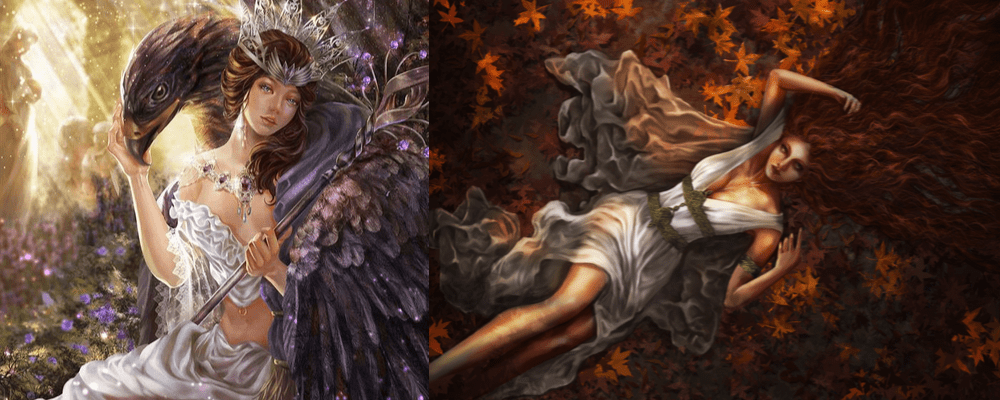
Perhaps this is why Thor wanted the necklace when he disguised himself as Freya. Not only was it associated with Freya, but it would help fool the giant onlookers into thinking that this big man in drag was a beautiful woman.
What do you think? Do you think Brísingamen possessed magical properties?






